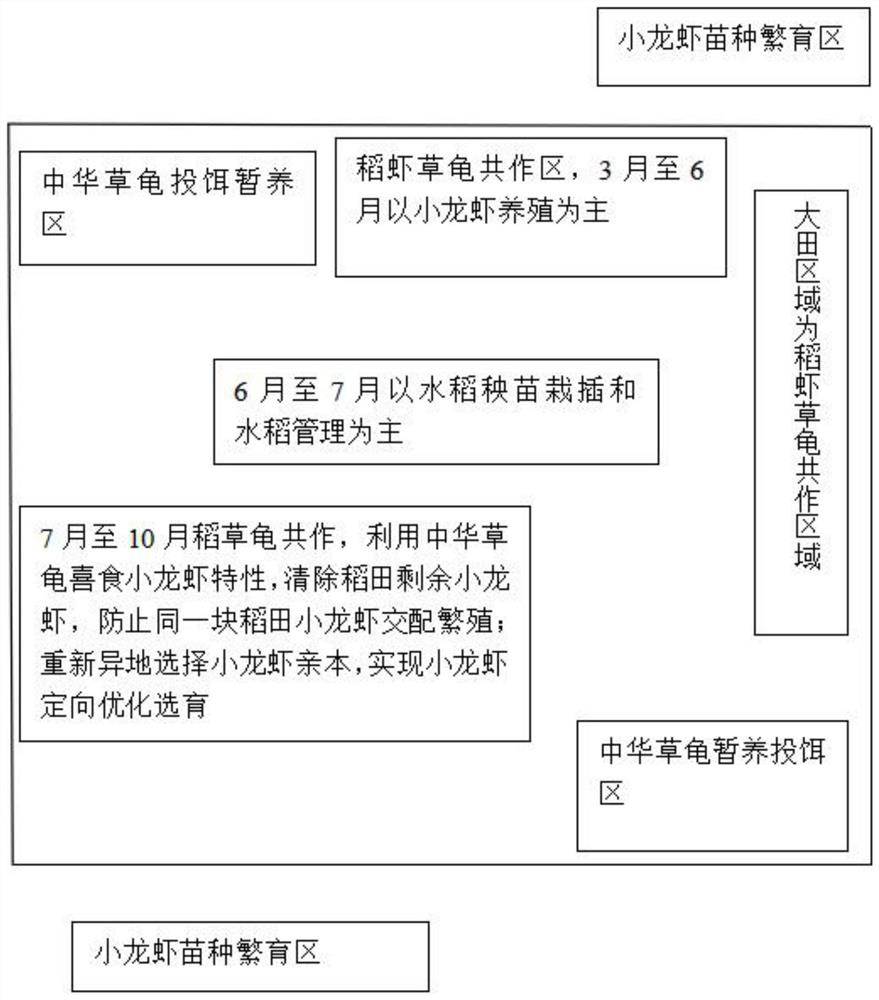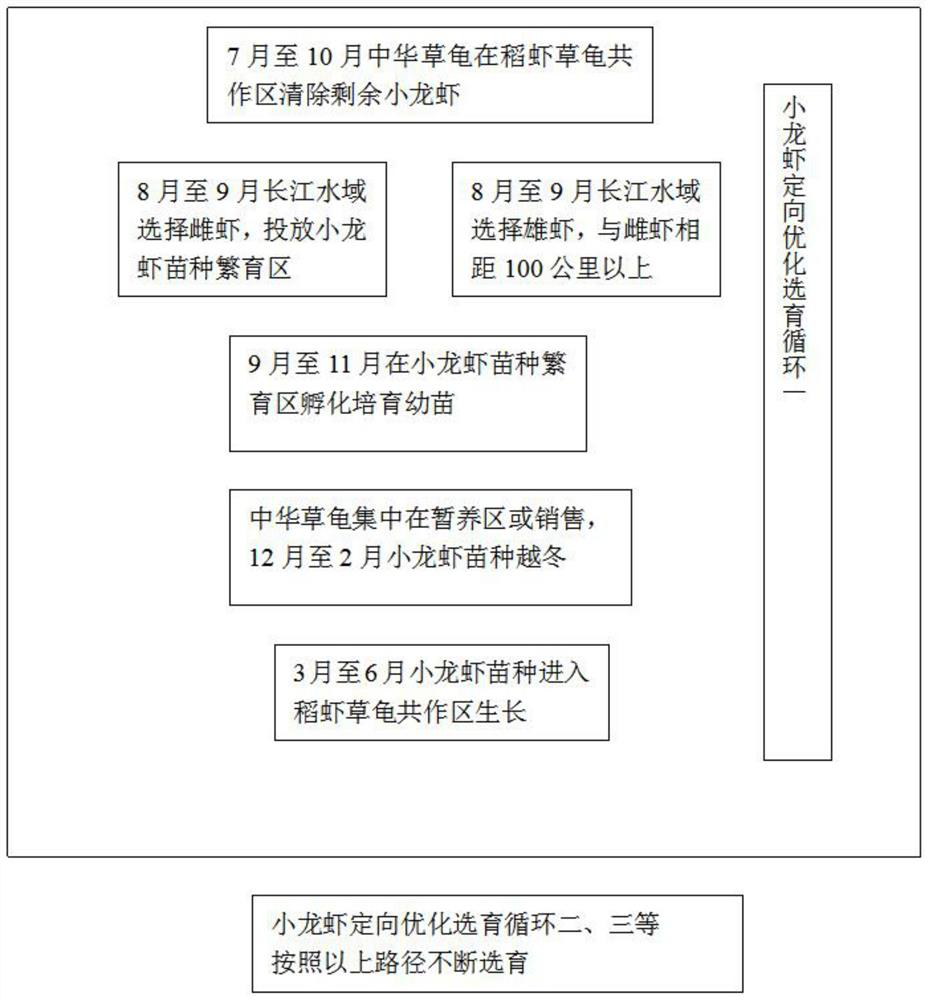Method for ecological breeding of lobsterling and chinemys reevsii and directive breeding of lobsterling seeds
A technology of ecological breeding and directional breeding, applied in fish farming, climate change adaptation, rice cultivation, etc., can solve problems such as weak market sales, high prices, poor quality and quality, and achieve the effect of reducing stress response
- Summary
- Abstract
- Description
- Claims
- Application Information
AI Technical Summary
Problems solved by technology
Method used
Image
Examples
Embodiment 1
[0038] The method for the ecological breeding of crayfish and Chinese tortoise and the directional selection of crayfish seedlings comprises the following steps:
[0039] Step 1: Construct the co-cultivation area for rice, shrimp and tortoise, the breeding area for crayfish fry, and the temporary breeding area for Chinese tortoise. Each area is separated by mesh to realize the diversification of rice field functions;
[0040] The space-time distribution combination of rice, shrimp, tortoise and paddy fields, in different spaces at the same time, or in different time periods in the same space, realizes that the same paddy field can meet the different needs of rice, shrimp, tortoise growth ( figure 1 Rice, shrimp, tortoise, and rice field zoning transformation diagram): In the rice, shrimp, and tortoise joint farming area, crayfish farming is the main focus from March to June; rice seedling planting and rice management are the main focus from June to July; Until October, the ric...
Embodiment 2
[0056] The homemade crayfish fermentation material is prepared as follows: 12 parts of soybean meal, 8 parts of corn, 9 parts of rapeseed meal, 8 parts of potato, 4 parts of sesame cake, 4 parts of thousand-head fish meal, 4 parts of crayfish meal, 3 parts of germinated shrimp rice, japonica rice, 3 parts of southern japonica germ rice with shrimp rice, 4 parts of shrimp rice bran, 4 parts of April green soybeans planted on the ridge of shrimp rice field, 4 parts of rice and shrimp powder, 4 parts of blue crab shell powder, 4 parts of selenium-enriched broccoli, selenium-enriched 4 parts of Sophora japonica, 4 parts of river clam, 3 parts of calcium dihydrogen phosphate, 3 parts of osmanthus seed oil, 1 part of tea seed oil, mechanically stir the above ingredients evenly; prepare appropriate amount of tap water for 2-3 days, add lactic acid bacteria , Bacillus, and yeast compound preparations. Use a special sprayer to evenly spray the compound strains on the raw materials and s...
Embodiment 3
[0061] The homemade crayfish fermentation material is prepared as follows: 15 parts of soybean meal, 5 parts of corn, 5 parts of rapeseed meal, 10 parts of potato, 5 parts of sesame cake, 3 parts of thousand-head fish meal, 3 parts of crayfish meal, 5 parts of germinated shrimp rice, japonica rice, 2 parts of shrimp rice south japonica germ rice, 3 parts of shrimp rice bran, 5 parts of April green soybeans planted on the ridge of shrimp rice field, 3 parts of rice and shrimp powder, 5 parts of blue crab shell powder, 5 parts of selenium-enriched broccoli, selenium-enriched 5 parts of Sophora japonica, 5 parts of river clam, 2 parts of calcium dihydrogen phosphate, 2 parts of osmanthus seed oil, 2 parts of tea seed oil, mechanically stir the above ingredients evenly; prepare appropriate amount of tap water for 2-3 days, add lactic acid bacteria , Bacillus, and yeast compound preparations. Use a special sprayer to evenly spray the compound strains on the raw materials and stir ev...
PUM
 Login to View More
Login to View More Abstract
Description
Claims
Application Information
 Login to View More
Login to View More - R&D
- Intellectual Property
- Life Sciences
- Materials
- Tech Scout
- Unparalleled Data Quality
- Higher Quality Content
- 60% Fewer Hallucinations
Browse by: Latest US Patents, China's latest patents, Technical Efficacy Thesaurus, Application Domain, Technology Topic, Popular Technical Reports.
© 2025 PatSnap. All rights reserved.Legal|Privacy policy|Modern Slavery Act Transparency Statement|Sitemap|About US| Contact US: help@patsnap.com


